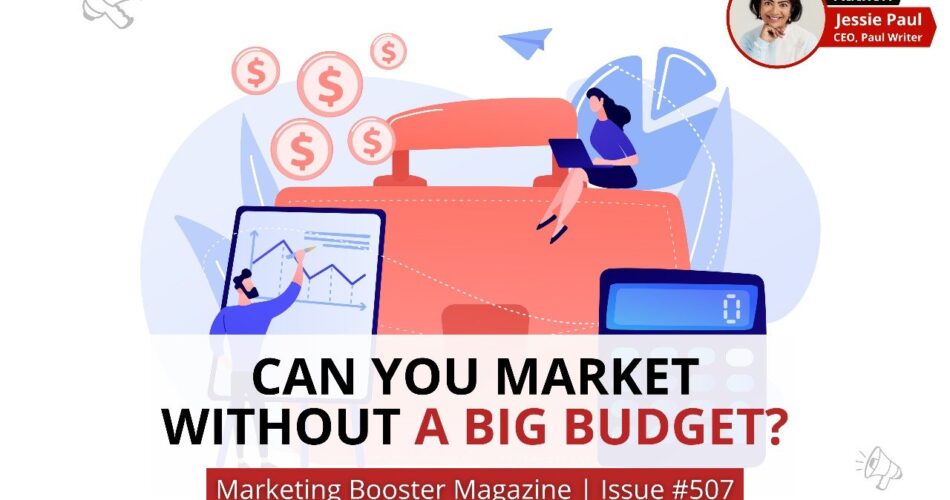Ask any marketer and they’re sure to say that they need a bigger budget. I did too – in fact I even had badges made with the number 25 when I wanted a $25 million budget (write in if you’re curious as to how much I really got and whether this internal campaign worked).
Now it’s not because we marketers want to live it up in Monte Carlo (ok, I did that too but for perfectly good reasons!). It’s because the competition is bigger or more profitable and therefore able to spend more.
Let’s face it – except for the top three brands in any category, the rest are challengers. And challengers have to be smarter with their marketing in order to become the leaders.
How can you market your product or service when you have less money than the competition? I’ve been building challenger brands since 1995 and having authored two books on this topic, I have some ideas I’d like to share.
Here are 5 tips to get started on low cost marketing:
1. Clear Positioning
It’s super important to answer the question of why someone should choose to buy your product or service as clearly and uniquely as possible. Try to describe this in 10 words or less without using the word “and”. Why do I say you should drop “and”? Because the more you have to say the more expensive – and less effective – it is!
2. Pick the right heuristic
Google conducted the messy middle research to understand online buying behaviour. One of my key takeaways from that research is that when consumers search for an offering online they look for shortcuts. For example, if they’re searching for a phone they may just compare the cameras if photos is the most important aspect. Take the example of Indigo airlines where we are clear about its value proposition – on time arrival. Or Maggi noodles – where the time taken to cook it is more important than nutrition or taste.
Identifying the right heuristic for your audience can save you huge amounts in marketing as you will be memorable and relevant to the chosen few.
3. Build Credibility:
Even the most brilliant and splashy of campaigns will not deliver results if no-one believes their claims. (One reason why oodles of VC investment cannot guarantee success.)
Social proof helps – when your customers share their wonderful experiences on social media. But word of mouth – while valuable – is notoriously hard to control. Sebamed did indeed spend a lot of money on advertising for a short while, but compared to HUL it was tiny. Credibility was built on a scientific concept – pH. Other popular props are industry associations, awards, academic institutions.
4. Partnerships:
Clubbing your marketing spend with another brand’s can help both of you amplify your voice. Look for brands where there is a symbiotic association. Tech product companies do this all the time – they tie up with IT services companies to expand their reach to other customers. Home finance companies partner with real estate companies to boost their reach. Effectiveness comes from identifying the right partner and then creating an innovative outreach program.
5. Diffusion:
Getting your products to sell themselves is an ideal situation, right? Apparel brands do this all the time – for example, every time you sport the Nike logo you become a walking billboard which says “Want to look as cool as me? Shop Nike”. Uber baked in diffusion by offering a discount code for every rider. It’s much harder for ingredient brands, but some, like Intel have tried hard.
Empowering your customers to sell on your behalf with a win-win proposition can help get your brand viral at a low cost.
Last piece of advice – take risks! Do things differently. Man bites dog is not exciting, but man bites dog – that gets talked about. Ensure that you have a strong point of view aligned with your position and feel free to speak about it whenever possible.
Thanks for reading!
I’m tired of being told to “Stay safe”. So I’ll wrap with Breathe Wisely.
Have a great week!

Source link



